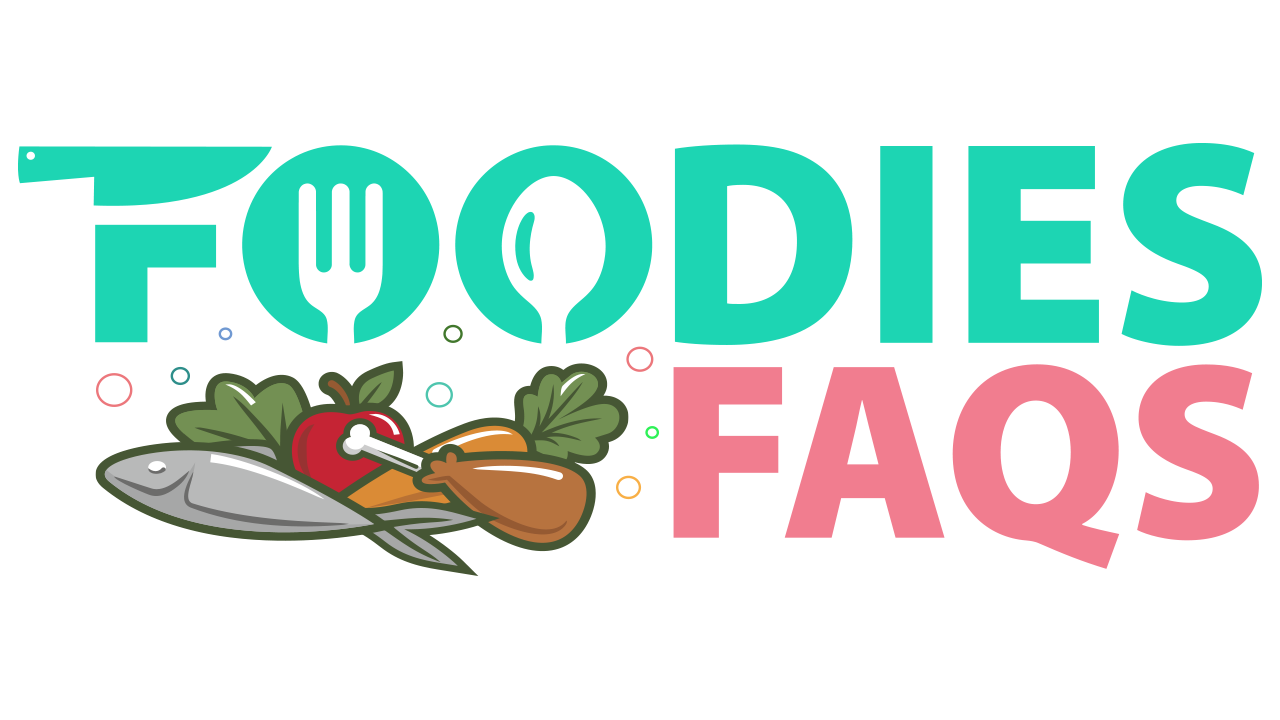Setting a diet is not just eating the same foods all the time. Diets require varieties of ingredients to make a healthy, fulfilling meal inside the circles of a regulation.
You can always look for different alternatives to set up your diet puzzles in the right places.
Different cultures like to eat foods in their way, and I love to try out the food preferences of different cultures to expand my pallet and discover new recipes.
Couscous caught my eyes while I was looking for new recipes for keto friendly foods.
Hence, I did a little research to see the possible factors of couscous being keto diet approved.
Have you ever wondered, “is couscous keto friendly?” if yes, I am here to lay down all the facts for your better understanding.

Table of Contents
How To Make Your Foods Keto Friendly?
It is not unusual to prefer a particular type of dish. And when you enter a diet program like the keto diet, you might want to be able to eat still the foods you prefer while you are on a diet.
It is possible to make your usual diet keto-friendly. You have to swipe a few ingredients here and there to fit the required energy intakes.
When you build up a keto diet, the first thing you need to cut down is carbs, the primary energy source we will eliminate while on keto.
So, swap out any high-carb foods you like. Bread, rice, and starchy vegetables are got to go.
If you like to eat rice as your primary energy source, you need to swap it with protein or high-fat diets.
For example, as you cannot enjoy your mixed rice bows anymore, you need to swap them with an avocado and chicken salad bowl.
Stop using sugars as sweeteners for your tea and coffee. You can exchange them with non-carb sweeteners.
The high sugar fruits are not something you can eat without counting. Portion out the sweet fruits based on your daily carb requirement.
Carb Management While On Keto
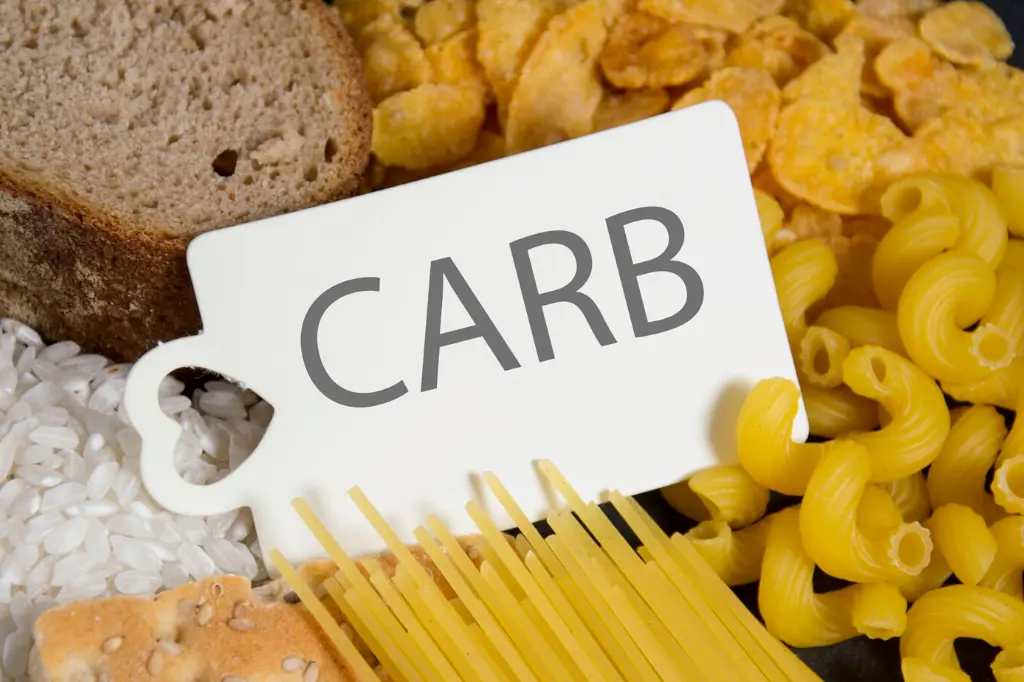
When you are in the process of setting up your low-carb diet or keto diet, you need to learn a few tips and tricks to manage your daily carb intake.
You have to learn how many carbs weights and stands on what calories.
Even though it is a little tricky, over time, you will be able to tell your carb limit by looking at and measuring a portion of your food.
Let me consider that you counted the number of calories you will get from carb base bagel, and you set a goal that you can eat half a bagel based on your keto diet.
Now, you will not eat this bagel always by itself. You have to manage the type of recipes you will incorporate with this bagel to enjoy the food.
You have to have a clear understanding of how many carbs you will eat in a day and at what times.
If you like to eat carbs for breakfast, set it with the breakfast menus. Also, you can put the required carb with your brunch or lunch recipes if you prefer to eat carbs later on the day.
Facts About Couscous

Couscous is a semolina-based food. It is a mixture of semolina and water paste rolled into tiny little pieces that look like irregularly shaped beads.
This was traditionally prepared by hand and steamed to prepare the authentic texture, but now machines are used to make them.
Couscous is a blank flavored base for any other foods to be mixed with. Like rice, you can use couscous with many different foods and side dishes like meat or veggies to spread the flavor profile.
It is also a high starchy food, so it is carbohydrate-based. So, is couscous keto friendly? We will see, but first, I have a little more explanation.
Many different North African cultures, especially Moroccans, love to use this as a carb source for their meals.
Though it is not initially processed like rice or other grain products, the couscous will give you equal carbs and energy.
You can enhance and combine different ingredients with building up the taste profile of your meal by adding couscous to your daily recipes.
It is a very filling and satisfactory food product loved by many.
Semolina
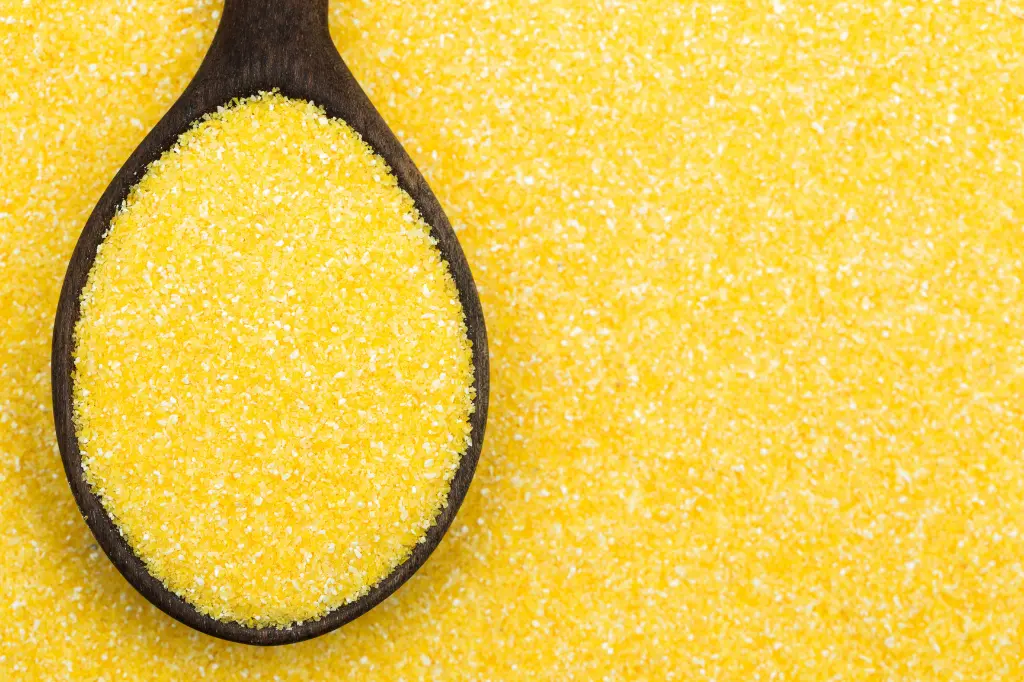
Semolina is the main ingredient of couscous. Without semolina, there would be no delicious couscous.
If we grind and make powder of durum wheat, we will get semolina flour, which has a golden yellow tint that gives the couscous richness and flavor.
Semolina is a very loved food ingredient all over the world. Many cultures prepare different recipes that they enjoy with the help of semolina.
In some places, people use semolina to substitute rice and bread, some like to prepare baby foods with it, and in some traditions, people love to make sweet puddings with semolina.
Health Benefits Of Semolina
Semolina flours are incredibly nutrient-rich. It is rich in protein without the presence of extra fats like meat does, which makes this carb-based food great for health.
Folic acid is one of the essential micronutrients.
Many food products are fortified with folate to expand the nutrient profile, but the semolina has naturally present folic acids. Only one cup of semolina contains about one-third of the daily folate requirement for a person.
Semolina has great iron content in them, and irons are crucial to human health as it is what build up the blood cells. The iron present in the semolina is non-heme iron, commonly seen in the vegetarian options of iron-rich foods.
They are not as fast absorbing as irons found in red meat, but with the help of other nutrients like vitamin C, you can increase the benefits available.
Durum Wheat
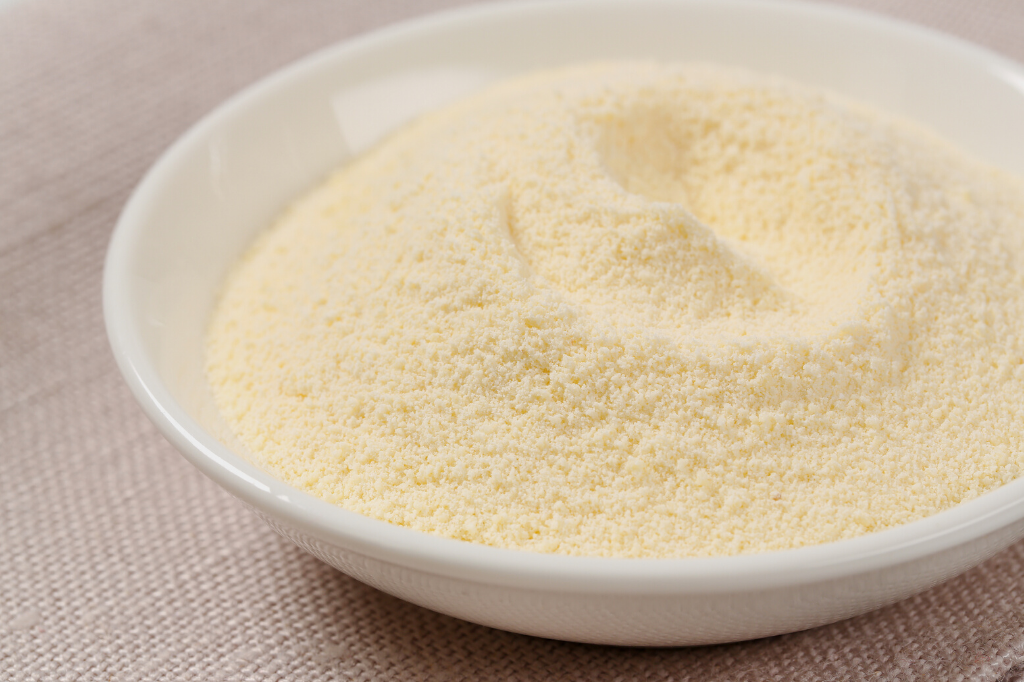
Durum wheat is also called macaroni and pasta wheat. This wheat is the second in the line of most cultivated wheat worldwide.
Generally planted in the spring, the wheat is ready to be harvested when fall hits. Mediterranean weather is well suited for this crop.
The main product made of this wheat is semolina. You can use this flour to make various foods, such as unleavened baked goods and non-glutenous pasta.
Are Durum Wheat Flours Better Than Wheat Flour?
Durum wheat and regular flour made of wheat are similar yet different. This two are among the most cultivated and consumed grains in the market.
The flour made of durum wheat is less refined than the wheat flour. The durum kinds of grain are more rigid than the regular wheat, making them harder to grind.
Hence, while grinding, a lot more pressure is needed resulting in the breakage of starch. That is why durum ears of wheat are not suitable for raising the dough.
While the typical wheat flours are flexible and have elastic properties, durum wheat is perfect for stretching without a tear but does not return to the previous shape once pulled.
This makes the durum wheat perfect for preparing pasta and spaghetti noodles, while the generic wheat flours are great for baking bread and fermenting the dough.
In a word, we can say the core difference will be that one has extensibility properties and one has flexibility properties.
Couscous Nutritional Facts

Couscous is rich in many different health benefits. This food product is rich in nutrition and gives you nourishment if eaten correctly.
The fiber content of couscous is high, making them great for your gut and overall health. Regular white rice will provide you primarily with starch and carbs; this is why couscous is a great carb source while on a diet.
A one-fourth cup of unrefined couscous will give you
- 160 calories of energy
- 33 grams of carbohydrate
- 6 grams of protein
- 1 gram of fat
And the same amount of refined couscous will provide you
- 150 calories of net energy
- 30 grams of carbohydrates
- 5 grams of protein
- 0 gram of fat
Cooking Methods Of Couscous
To cook authentic handmade Moroccan couscous, you need a special steamer made just for couscous.
But you can use normal saucepans or pots to make perfect couscous. Go to the supermarket and pick up a pack.
- Take one portion of couscous and half part of water.
- Pour the water into the saucepan and let it boil.
- Put the couscous into the boiling water and stir.
- Let the couscous steam for five minutes by covering the pot with a lid
- Use a spatula to fluff up the couscous. Do not stir aggressively.
You can use vegetable broth or flavorings with the couscous if you want.
Now, enjoy your warm and delicious couscous.
Are Couscouses Keto Friendly?
Couscous is a high-carb profile food. As you already know, keto is a carb restriction diet. Any food rich in carbohydrates is not allowed while on a ketogenic diet.
One hundred grams of couscous contain almost 23 grams of carbohydrates, which is way over the restriction limits. Hence, the answer to “is couscous keto friendly” will be a no.
Most keto diets require you to eat less than 50 grams of carbs every day. And some even say 20 grams to 30 grams is the limit. And to keep this range up, you cannot eat couscous in adequate amounts.
Couscous is also very low in fats, another red flag for it not being keto friendly. The primary energy source of keto diets is fat. If your foods are low in fat, that will not fill up the purposes of keto diets.
You need low-carb, high-fat foods to be on this diet; therefore, couscous is not keto friendly.
How To Include Couscous In Your Meals?
You cannot eat couscous like you usually do while on keto. But that does not mean you cannot even touch the food with it.
If you follow different recipes and build up one for yourself, you can add a small portion of couscous to your diet.
Yes, it will not be the same, and you will not feel like you are consuming a lot of couscouses, but at least something is better than nothing.
Veggie Salads With A Sprinkle Of Couscous

Couscous has a mouthfeel. Hence you can put them on your salad in small amounts and still enjoy them.
Take leafy greens and vegetables that have almost no carbs or are keto-approved.
Now prepare the salad by chopping and stirring the veggies. You can add a drizzle of olive oil, low-carb soy sauce or fish sauce, and Himalayan pink salt with black pepper. Pick your favorite seasonings and spices to oomph up the flavor profile.
Add a small amount of couscous into the bowl and stir for a couple of minutes. The couscous will give your salad an exciting flavor, and you will enjoy eating them.
As you are using a bunch of very low-carb vegetable ingredients to prepare the salad, you can add the couscous in a smaller amount without causing a distraction to your keto limits.
Grilled Veggie And Chicken Salad With Couscous
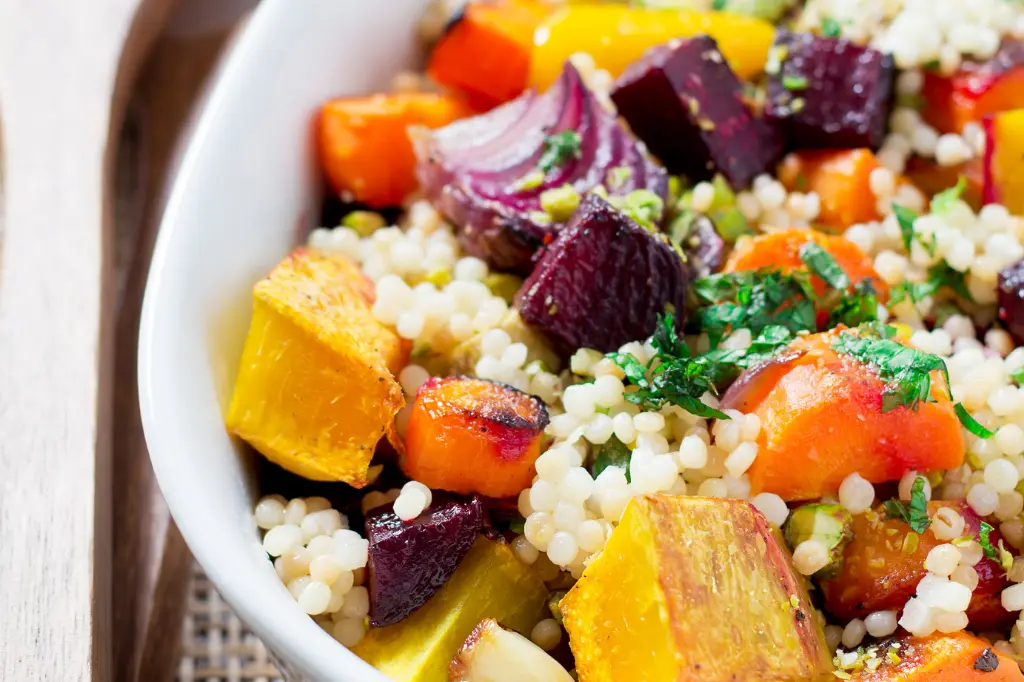
For this recipe, you need your favorite veggies and pre-marinated chicken breast. Grill your vegetables mildly, and do not burn or put heavy sizzles because you still want a healthy meal.
Marinate your chicken breasts overnight with seasonings such as olive oil, garlic powder, parsley, chili flakes, pepper, salt, and fermented sauces of your choice.
Cook your chicken on the pan at low heat or use an air fryer, depending on your preference.
Steam a tiny bit of couscous. I am talking about one or two teaspoons of couscous that will be less than 30 grams, not more than that.
Set your veggies in your salad bowl, and on top of that, put the chicken breasts cut into bite-size pieces.
Sprinkle the couscous on the bowl and enjoy! It is not a lot of couscouses but if that is all you can eat, let’s enjoy however amount we can get.
Frequently Asked Questions
1. Are couscouses carb-based?
Yes. Couscous has a good amount of carbohydrates, so they are under the carb-based foods.
2. Can I swap rice with couscous?
Yes. You can swap rice with couscous while you are meal planning. Both of them are carb-rich foods.
3. Is couscous healthy?
Yes. Couscous has many different health benefits. Depending on the type of diet you are on.
4. Are couscouses delicious?
Yes. If you can prepare the couscous properly and cook it by following a good recipe, you will love eating couscous.
5. Are couscouses grains or pasta?
Couscous is made from grain ingredients, but couscous itself is not a grain. It is a kind of pasta.
6. Are couscouses healthier than non-value-added white rice?
Calorie and nutritive value-wise, couscous is healthier than non-value-added white rice as white rice only contains mainly starch, but couscous has protein, starch, fibers, and minerals.
7. Are semolina and couscous the same?
No. couscous is a food product of semolina flour, but it is not semolina.
8. Can I eat couscous as a meal while on the ketogenic diet?
Couscous has a lower fat content and higher carb content; therefore, you cannot eat couscous as a meal while on a ketogenic diet.
Final Thoughts
Couscous is loved by many, but it is not the best food choice for people of specific diets. The answer to “is couscous keto friendly“will simply be a no.
But, even though you cannot eat couscous as a full plate meal, you can add this unique ingredient to your meals in just a tiny amount.
Less is more for the couscous lovers and their meal planning. But being creative can give you a chance to fit your favorite foods into your daily meal prepping.
I hope this article helps your meal prepping with couscous a little easier.
